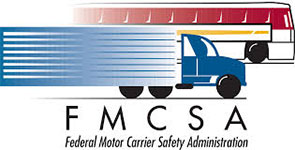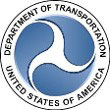How Do I Safely Ship a Car?
The safest way to ship a car, truck, or SUV is to work with a reputable, fully insured auto shipping broker.
Shipping a car over long distances is safer than driving and it can possibly be less expensensive due to the time and travel expenses involved. That being said, there are specific things you need to consider in order to safely ship your vehicle.
Research the Auto Shipping Company
There is no regulation in the car transport industry; anyone can start a car transport company with the cost of a bond — which is $75,000 — providing unimpressive results for the masses. Dozens of car shipping companies are available, making it complicated to identify ones you can trust.
Every car shipper gets a motor carrier (MC) number which the Federal Motor Carrier Safety Administration (FMCSA) assigns. It enables you to access and verify that a specific transport company has a proper license and insurance. The number also allows you to check for the company's customer complaints and accident records.
Before you think of getting a car transport service, conduct your research. You can take about 10 minutes to read each company's reviews online. Check for any negative complaints about missing items, car damage, or driver incompetence. If you see such, it's a good sign that they're not reliable and reputable. Be cautious of any vehicle shipping quotes that are signifcantly lower than its competitors in the industry.
Be Prepared for Reasonable Shipping Times
Car shipping is different from shipping a package since it doesn't occur overnight; they're usually costlier, heavier, and slower moving. Typically shipping a car cross-country takes 7-10 days; shorter routes could take 3-5 days. Plan in advance to get a carrier and know the time it will take to load and deliver. Unexpected delays could happen and this is why carriers have a two-day window for pick-up and delivery. If you are unavailable to receive the car when it arrives, appoint a trusted person to represent you and do an inspection.
Open Carrier vs. Enclosed Car Transport
An open carrier or uncovered is usually a less expensive method of shipping a vehicle. Also, it's stress-free and a faster way of delivering vehicles. Many companies use this method to send cars nowadays due to its many benefits. But, your vehicle may be prone to debris and other elements that could pass along the way. Even though an enclosed or covered car transport offers protection, its average cost is about 60% more. Since enclosed carriers provide better security, you can use them to ship a high-value or classic vehicle.
Other Pricing Parameters
Season
Wintertime is the most popular to ship a vehicle to usually to the southeast, plus many other states and that is also the most expensive time of the year to ship any vehicle. The reason is because when there are more vehicles being shipped, the higher the price will; when there are fewer cars being shipped, the cheaper the price will be.
Vehicle Size
Larger vehicles consume more space inside the carrier, while heavier ones add extra cargo weight. Thus, it will be costlier to ship them.
Check Your Insurance Coverage
Finding out about a company's insurance coverage is crucial. That's because events could happen which may affect your vehicle during shipment. Open carrier transporters need to have $250,000 in liability insurance whereas enclosed carriers need only $100,000 in coverage. Besides, you need to check with your insurance company to know the type of coverage you have if an accident occurs en route.
Get Your Car Ready
Car shipping involves more than driving your vehicle onto the truck and bidding farewell. You can do many things to get your car ready for shipping. These include:
- Removal of personal items
- Folding of side mirrors
- Deactivating electronic toll transponder
- Do not give the driver your title — or any other important documents; these should be mailed via certified mail to the intended recipient.
Inspect your Car for Damages
Carriers often conduct a thorough inspection of the vehicles before loading them onto the truck. The aim is to look for any dents or scratches and take notes. That becomes a crucial piece of evidence in case there's any damage. But ensure you inspect the car yourself to find out the authenticity of the reports. Also, try and inspect the vehicle when it arrives if there was any damage on the road. Another excellent idea is to take some pre-and post-shipment pictures if there's a need to support a damage claim.
Wrapping Up
Shipping a car involves a whole lot of processes. Even though car shipping is safe, you still need to consider specific things. Choosing a reputable car shipping company is crucial and can help avert some dangers.Contact us today and let us know your car shipping needs.




